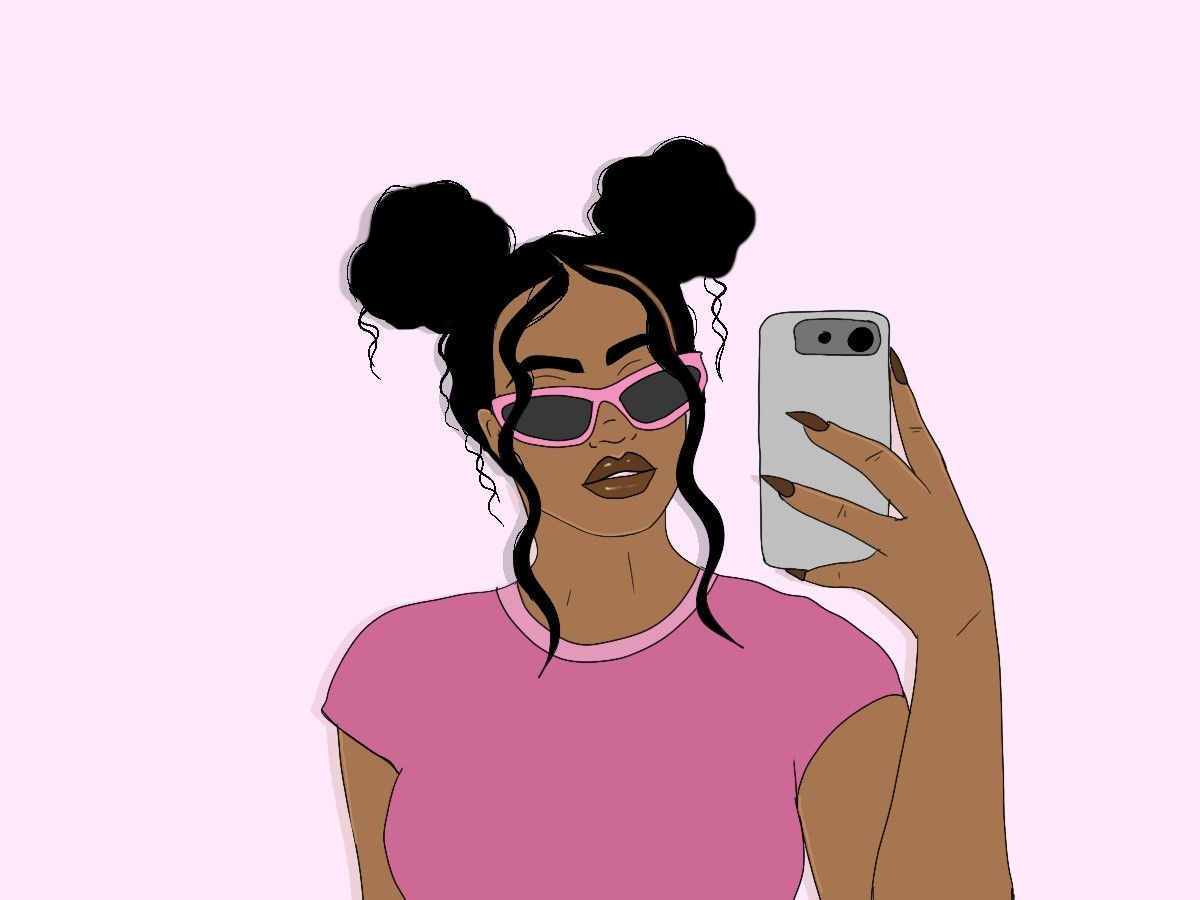Everyone has been there after a bad day. Venturing onto your favourite brand’s website and ordering things you don’t need for that quick dopamine hit. After waiting anxiously for days, you get excited when your package arrives. But then it becomes a pattern. Without realising it, you have become a victim of materialism and overconsumption, all because of social media.
Social media and its impact on fashion trends
The relationship between materialism and social media platforms is simple. In the age of the internet, social media influencers churn out ads and brand deals, as their main source of income, for their followers. As avid consumers of media, we become invested in influencers, so buy into the things they sell. In 2018, unboxing videos and clothing hauls became insanely popular as fast-fashion brands realised YouTubers were taking over. Social media influencers, such as Tana Mongeau and Ari Dugarte, pioneered the trend with their try-on bikini and try-on clothing hauls.
Countless hours were spent watching these videos as I searched for the perfect outfits for sixth form and then university. At the time, I didn’t think about what I was contributing to, only what I ‘needed’. During the pandemic, my obsession was skincare because I had dry skin and excess amounts of acne. After some brief research on YouTube, I went onto LOOKFANTASTIC and filled my basket with Cervae and La Roche Posay, trying to put the cost out of my mind. This cycle became normal to me. Whenever I thought about buying something, I would consult social media first.
Materialism has tricked us into thinking we need everything that gets advertised to us. But why have we become so reliant on social media to tell us what to buy? One key factor in my opinion is COVID-19. In March 2020, with the worldwide shutdown, we spent more time on social media than ever. Microtrends dominate the internet and TikTok gained a huge influx of users during the pandemic. According to an article by CBNC, results showed that TikTok had 700 million active users globally by July 2020. It is no surprise that TikTok had a hand in creating microtrends and we as consumers bought into it.
Influencers and influencer marketing

It is not just fashion that has suffered at the hands of social media and the pandemic. When the world opened up again, so did the portal of influencers joining and making it big on TikTok. The ones who come to mind in 2023 are University of Miami student, Alix Earlie, and controversial makeup artist, Mikayla Nogueira. Mikayla was recently criticised for allegedly faking a mascara sponsorship with L’Oreal. Mikayla wore what appeared to be false lashes instead of the L’Oreal Telescopic mascara she was supposed to advertise.
TikTok followers and users complained about how unrealistic the ad was. The lash company, Ardelle, even stitched Mikayla’s video, poking fun at the possibility of her wearing a pair of their lashes! At this stage, there was a turning point with influencer marketing. In the age of TikTok lives and the TikTok shop – the online store where users can shop for their favourite person’s must-have products – Mikayla’s mistake created distrust around influencer sponsorships.
If someone with 14.6 million followers could do this and come out unscathed, then how many others have already done it and gone right under our noses? Yes, there were similar scandals in YouTube’s heyday: YouTubers promoting scam therapy service BetterHelp and the private land-buying scam, Established Titles, for example.
YouTube sponsorships are still common, but I think they are less likely to attract customers. TikTok videos are shorter and better for low attention spans. Convincing someone to purchase from your link on TikTok is easier with it plastered right in front of you…until now.
The era of social media de-influencing
Social media users have become fed up with products being pushed on us and everyone is more conscious about what they are buying, especially with the ongoing cost of living crisis. Some consumers have even decided to take a stand to tell you what not to buy. Essentially, de-influencing is rejecting products advertised to you and thinking critically before you make a purchase. The hashtag #deinfluencing now has over 500 million views on TikTok of users sharing their reviews and dupes for popular products.
It isn’t really to combat overconsumption but it certainly helps to reduce spending. I’d argue the trend is just another fad in response to social media users’ increasing distrust of influencers. In fact, The Evening Standard reports that influencer marketing agency, Room Unlocked, found that “64% of Brits say they have lost respect for influencers that are driven by commercial gain”.
Is it effective? That depends on what your goal is. Overconsumption will not decrease unless we all start to shop with sustainability in mind, and if mass production rapidly declines. De-influencing is more of a way to shop with authenticity rather than to stop shopping altogether. It is helpful and teaches us to read our own reviews first and consider the usefulness of what we are buying. But this does not mean influencer marketing is over. I am still getting countless ads for rosemary hair oil on the TikTok shop, and I’ll admit I am intrigued by it. This trend only serves to help us consume less or to just be more conscious when we are doing so. It will not thwart social media and its reign on overconsumption.
Combating overconsumption the right way
So if not through de-influencing, how can we help? Make a note of your inventory. Keeping track of what you have and don’t have will help you to fill the gaps of what you are missing and what you can prioritise buying. Also, shop sustainably! If you can afford to, buy recycled clothes and products made from sustainable materials. Or, shop secondhand – charity shops in London are amazing!
Ask yourself if you really need those flared jeans and that new highlighter, or if you just want it because your ‘For You’ page said you did. Budget for your leisure purchases. Get an app like Budget Planner where you can manage your expenditures so you can see if you can afford the things you want. If not, you do not need to buy them. Lastly, listen to yourself. If your conscience is telling you not to buy something for whatever reason, pay attention. It’s trying to help you out.
Find more lifestyle articles here >
Written by Sophie Humphrey
Illustrated by Francesca Mariama

